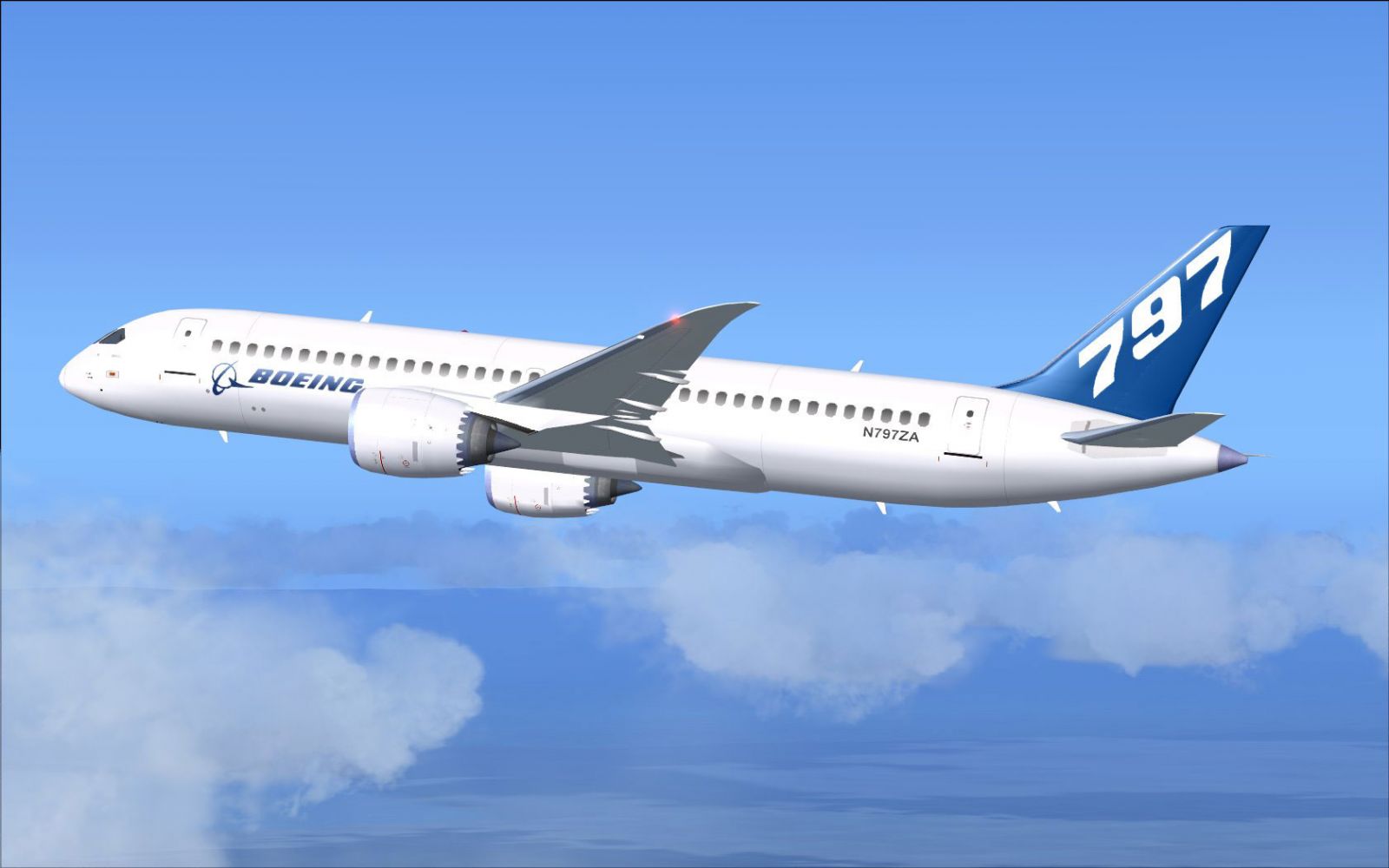Boeing will launch its new 797 a plane all passengers will love, next year at the Paris Air Show say marketing leading analysts.
The twin-aisle 240-270 seat New Mid-Market Airplane (NMA) or Boeing 797 is widely expected to be introduced at the Paris Airshow in July says Edward Ambrose of Seeking Alpha.
Another analyst who wanted to remain anonymous because of close links to Boeing said that a go-ahead was almost certain.
Read more on the Boeing 797 here at TheAirCurrent.com
Read Delta has wanted the 797 for 38 years
And Mr. Ambrose suggests Boeing’s stock will soar on the announcement of the specifications of the plane are good enough then the stock will go up.
People close to the secretive project say the 797 “looks awesome.”
They say there is now a consensus amongst the leading buyers if the 797 of the size and layout of the aircraft.
The massive appeal of the 797 will be its passenger cross section of 2-3-2 with huge overhead luggage bins which will put an end to the economy crush.

The 797 will be a made of composite material like the 787 and it will be able to economically connect hundreds of new non-stop routes between smaller cities.
Earlier this year Boeing moved one of its top engineers, Terry Beezhold, to the program signaling that it is very serious about the aircraft.
Mr. Beezhold has had lead roles in the 787 and was project engineer on the ultra-long-range 777X, which will fly next year.
In June Boeing defined two versions – the NMA-6 (797-6) with 228-passenger, 4,500nm (8,300km) and the NMA-7 (797-7) which would seat 267 in two classes with 4,200nm range.
The 797-6 would be launched first, followed by the larger 797-7. Range appears to be closing in on 4,500 nm (8300km). This range allows it to do the vast majority of routes that Asian airlines currently fly with A330s as well as most interesting trans-Pacific routes and all trans-Atlantic routes.
By not pushing the range further, the 797 will have reduced structural weight and thus cost.
Boeing sees the market at about 5000 planes over 20 years.
It sees the 797 as a stimulus to the market creating thousands of new routes thus new business.
The company says there are 30,000 city pairs currently not linked that would be perfect for the 797.
Boeing and its legacy company, McDonnell Douglas,both touted a similarly sized aircraft – 7J7 and ATMR – as early as 1980. However, at the time aircraft seating was more spacious and passenger’s carry-on very limited and airlines couldn’t make the business case.
Fast forward to 2018 and passenger seating is far more cramped and the demand for overhead space far greater than a single aisle capacity allows.
A 797 with a 2-3-2 configuration means passengers will have more room regardless of the seat pitch and the overhead bin space will be massive.
Another plus will be that boarding and deplaning will be much faster.
























